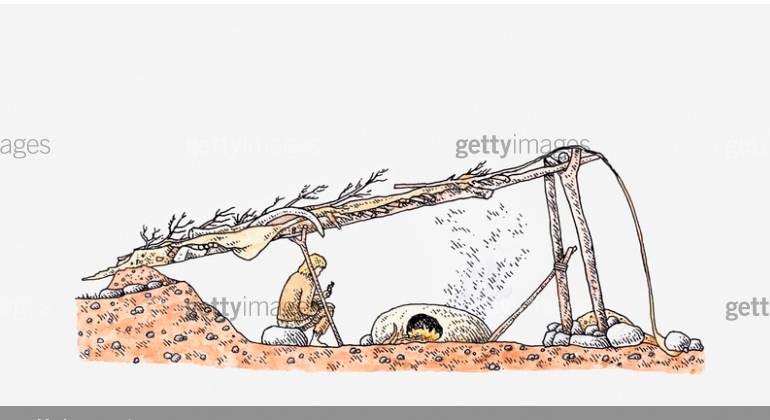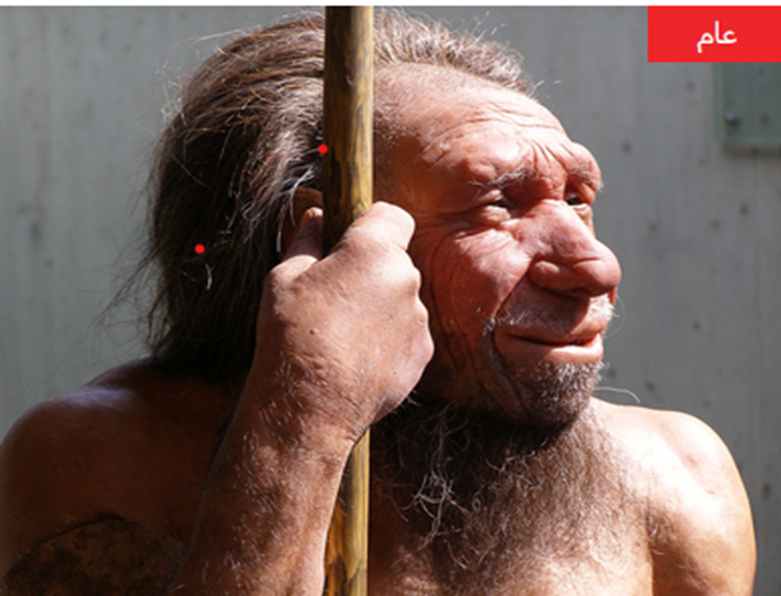A day in the life of an Ice Age man.. That's how ancestors lived
Recent studies in the field of “fossils” have revealed many mysteries about the life of the first humans, so that today we can draw a complete picture of the form of life in different eras, and how the ancient man dealt with the fluctuations of nature and weather changes such as the harsh winter, and was finally able to survive and pass survival test.
Inspired by these discoveries, in the following lines we take you through a day trip into the life of an “ice age” man in particular, during which we may be able to imagine how this ancestor spent the harshest winters and the way he was able to organize his life inside the caves.
“Neanderthals” .. Get to know the members of the Ice Age community
There is a common myth about the “ice ages”, indicating that they are periods when life ends on the face of the earth, which is a false information; Those ages, when snow covers the globe as a white blanket, are a test of life. Where livelihoods are severe to the extent that survival, for the most able to adapt and coexist with it, and at that time, according to scientific theories, a species of extinct human ancestors lived, the Neanderthals.
Neanderthals are one of the closest extinct ancestors to us, and we even lived with them at some point in time, and intermarried with them . Some research indicates that most people of European or Asian descent carry part of the Neanderthal genes in their genes.
This ancestor evolved nearly 400,000 years ago, and lived in the European continent and parts of Asia about 300,000 years ago, a human that survived the "ice age", and experienced extreme fluctuations in the climate that was 20 degrees colder on average.
In the last ice age, snow covered the northern hemisphere, extending as far south as the borders of southern Africa and half of Australia. And beside the frozen North Sea, Neanderthals lived among the harsh features of nature, trying to take advantage of what it had to offer, in order to survive.
(Documentary about the life of Neanderthals)
Anatomically Neanderthals were more robust than modern humans and more adaptable to the harsh northern climate. The head of this ancient ancestor was distinguished by large, wide eyes, which were designed for night vision; Where the night of winter is the darkest and longest, which is one of the factors that helped them survive during the Ice Age, but at the same time it occupied a part of their brains to calculate the complex processes of vision, which made their minds different from the humans who lived in Africa - our ancestors - and evolved lobes for them frontal brain, which helped them to reach higher levels of thinking and intelligence.
This is in addition to the large pulled nose that distinguished the face of Neanderthals from the first humans to adapt to cold, as this large nose helped him to breathe in a way that warms and moistens the air entering the lungs, which made them have a huge lung and a large anatomical chest, which can burn more energy for heating.
Their bodies were characterized by a lower half that was shorter than the upper half, to maintain body heat, and they also used the jaw as a tool that enabled them to carry things, which helped shape their facial bones in a distinctive way, and their front teeth were eroded for the same reason.
The "Industrial Revolution" in the Ice Age... This is how they made their tools
Each period of history was associated with a certain precious metal or energy source that caused what resembles an industrial revolution of the era, around which society is formed, and in many cases controls the lives of its members. "Flint", a type of rock used to make fire, was the engine of Ice Age civilization and society.
“Beat stone by stone, you will make sparks of fire.” Thus the ancients made their tools, cooked food, and were warmed in the cold; Neanderthals were the first to start a fire . It was like we discovered iron or electricity and then oil. As this ancient man trimmed the edges of the flint stone, in precise and sharp shapes, he made the tools he needed for survival, such as the edges of spears to help him chase prey.
At that time , the caves were natural shelters for the first humans, as they took them as homes and dwellings for protection, whether from the dangers of the wilderness or frost, and the ancient man always chose a refuge near a water source; This provides an added advantage of the place making it livable.
Pleistocene man subsisted mainly on hunting, making him one of the most predatory creatures of his time. He was an accomplished hunter whose fossils are associated with fossils of ancient deer, Ice Age reindeer, and rhinoceros, which they considered a good source of meat due to their weight.
This extinct ancestor also knew clothing; Some of them made fur robes, others wore the skins of large animals around their shoulders, and some even made hoods to further insulate the cold. Even so, Ice Age fashion was much simpler than that of modern humans, who invented intricate ways of dressing based on trimming and knitting.
“Nomadic Bedouins” .. this is how you can imagine the chapters of their lives
Ice Age humans took different ways to conduct their lives during the different seasons in which the climate oscillated between harsh winters and some warm months. This made their lives centered around two things, the first was to travel in the warm months to chase prey in their migrations and thus secure their livelihoods, and the second thing was to search for a safe and isolated place during the harsh winter months.
In good weather, the Ice Age man chased his food along with wood and stones, so they went out to the forests and plains, and their lives were based on camping in order to collect the goodness of nature, following the migration patterns of animals.
Organizing was also an aspect of life for those who lived in the Ice Age; Early humans were not chaotic about their lifestyle, but rather arranged roles among themselves. You find them chasing prey and then transporting it to special sites near the river for skinning, different from their places of residence. This indicates that this ancient man knew a primitive pattern of slaughterhouses, and also took places for work that differed from places of residence.
Early humans studied the movement of weather, because it was the center around which their lives and travels revolved, and they also understood the geography of the regions in which they lived well and drew mental maps according to their beliefs, which helped them to accomplish the tasks of hunting and planning in advance of their actions.
Ice Age humans lived in groups that resembled tribes in their system, and members of the group helped each other in hunting as one of the main activities in society, which indicates that they reached a high degree of communication, which may not resemble our current language in its complexity, but it enabled them to socialize, They used sounds, in addition to singing, dancing and signs, as means of expression. Because they were few in number, they would intermarry with each other, or swap women between different groups to help preserve genes.
But this way of life wouldn't last long for a Pleistocene; As soon as winter arrives, livelihoods differ in the bitter cold, and he resorts to isolated places such as caves to protect himself from the icy wind and climate fluctuations.
This would have required those who lived at that time to find for themselves ways that bears and other mammals did "hibernation" to preserve their bodies in the colder months. This is what made primitive man go to sleep throughout the winter months to maintain body temperature in relation to limited food and the metabolic process that aims to convert this food into energy. This also required adequate food storage for the hibernation period.
That result was what scientists came up with based on the recent discoveries of work at the “Sima de los Huesos” fossil site in northern Spain, which is called in Arabic “the bone mine.” After they finished scraping the fossilized sediments in this cave, which the scientists considered a mass grave of ancestors, they found that there are seasonal differences that are reflected in the way the bones grow in the first humans who experienced harsh winters, represented in the Ice Age man suffering from disorders in bone growth as a result of this state of hibernation. . The researchers say that the strategy of "hibernation" was the only solution for them to survive inside the caves in these difficult climatic conditions.
https://sasapost.co/that-is-how-cave-men-survived-ice-age/?fbclid=IwAR1kAmKGdnzhJdufSshi7RNfrOcp0Hw5tt-qRC1op4n_xrbTnngterwwDLc





